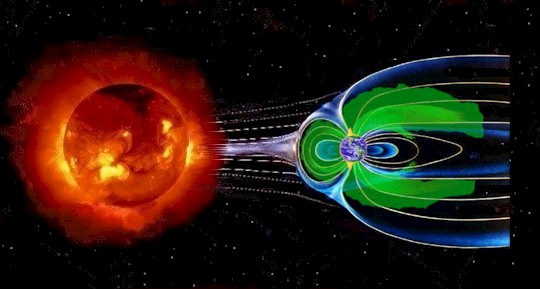| Home Syllabus Notes Homework Projects Examinations Resources |
George Mason University
CSI 769/ASTR 769 Topics in Space Weather Fall Semester 2005 |
 |
|---|
| Home Syllabus Notes Homework Projects Examinations Resources |
George Mason University
CSI 769/ASTR 769 Topics in Space Weather Fall Semester 2005 |
 |
|---|
|
|
| Syllabus
in .doc format CSI 769/ASTR 769 Topics in Space Weather Prerequisites: permission of instructor. Credits: 3 Description:
Space Weather is a new field of
science that studies the space environment driven by the interaction
between
the Sun and the Earth. Space Weather can adversely affect humans and
human
technology, including astronauts, satellites (systems and orbits),
communications and navigation, electric power grids, and pipelines. This course begins with an overview of the
space weather systems involving the Sun,
Heliosphere, Magnetosphere and Ionosphere. Physical processes in
the solar
atmosphere are the ultimate drivers of space weather. We will present
the basic
structure of the Sun, the solar magnetic field and configuration, the
physical
bases of flares and coronal mass ejections, and particle acceleration
mechanisms. The various forms of particle and field outflow are traced
throughout interplanetary space. Evolution of solar disturbances
through the solar system the configuration of the solar magnetic field
in the heloiosphere, and the consequences for acceleration of particles
are covered. The interaction of the solar wind with the nearby
interstellar medium is covered as well. Together, the Sun and
heliosphere form the boundary conditions for
establishing
the physical state of the near-Earth space system, including the upper
atmosphere.
The outermost magnetized region
surrounding the Earth is the magnetosphere.
The solar wind causes the Earth’s dipole-like field to be distorted and
elongated. The outermost field lines are highly variable, depending on
the
conditions of the solar wind. The physical processes that govern the
magnetosphere’s behavior and its interaction with the atmosphere will
be
covered. These include electric fields and particle acceleration that
can
produce geomagnetic storms. The ground state of the upper
atmosphere is established primarily by solar radiation. The
fundamental equations of state that dictate atmospheric equilibrium and
the
creation of the ionosphere will be
presented. Basic processes include neutral gas dynamics, ionospheric
motions,
and photochemical processes. Some aspects of non-thermal radiation
transport
and spectroscopy will be covered as background material for
understanding
remote sensing of the near-Earth space environment, a new tool for
understanding space weather on a global-scale.
Homework
Projects: Exams: one
midterm and final Text Book (required): 1. “Physics of the Space Environment”,2. “Introduction to Space Environment”, Thomas F. Tascione, 1994
Supplement
Reference Books (reserved at Johnson Center Library): “Physics
of the
Solar “Solar and Steller Magnetic Activity”, Carolus
J. Schrijver and Cornelis Zwann, 1999 “Solar
Activity
and Earth's Climate”, R.E. Benestad, 2002 “An
Introduction
to Plasmas and Particles in the Heliosphere and Magnetospheres”,
May-Britt
Kallenrode, 2004 “Theory of Planetary Atmosphere”, Joseph W.
Chamberlain, Donald M. Hunten
“Physics & Chemistry of the Upper Atmosphere”, M.H.
Rees
"Physics of space plasma: An Introduction", George K. Parks
|